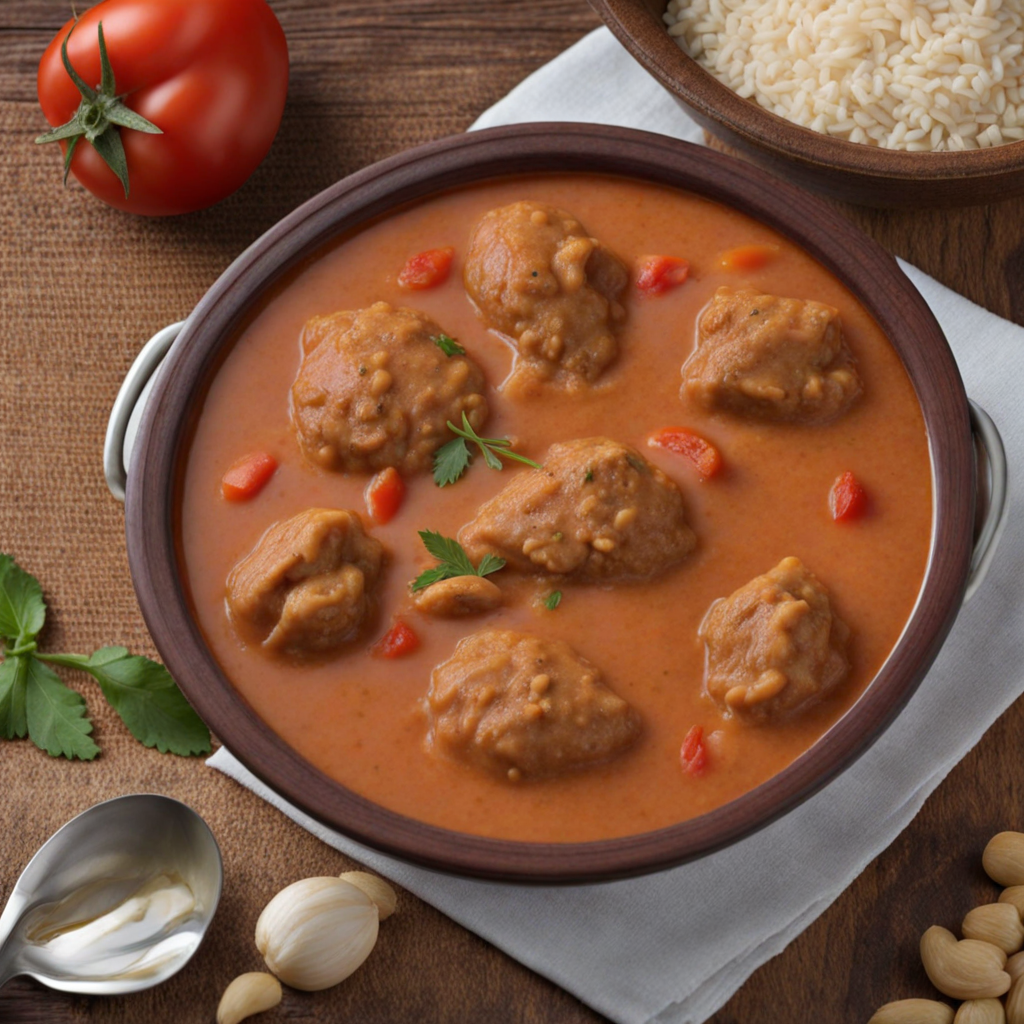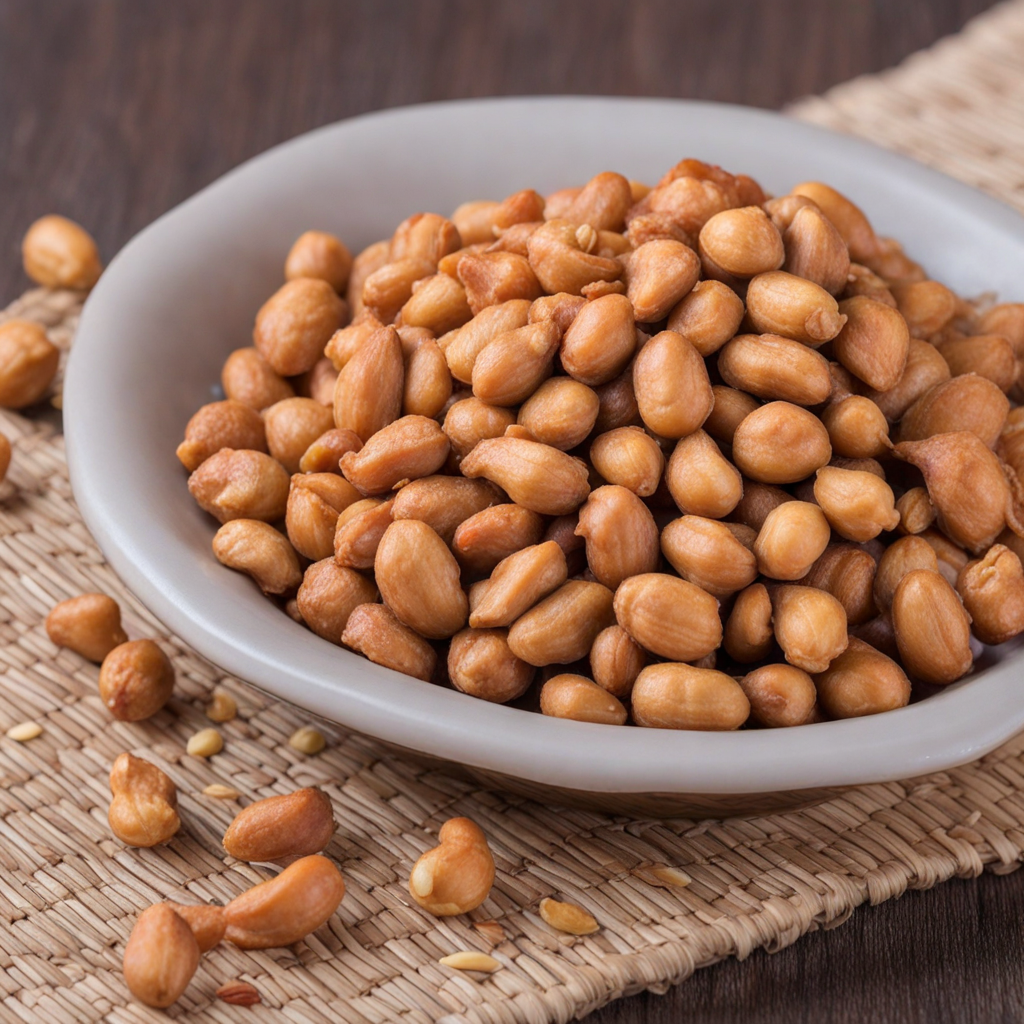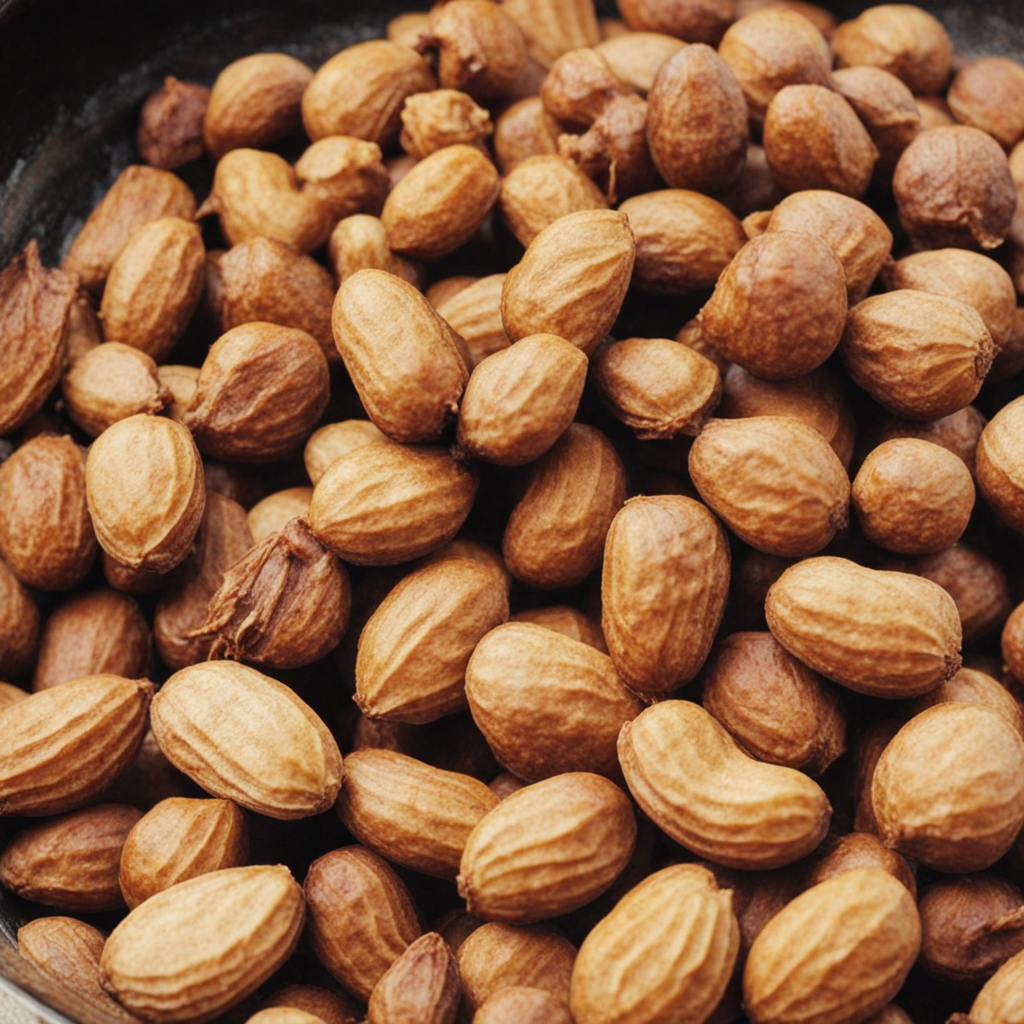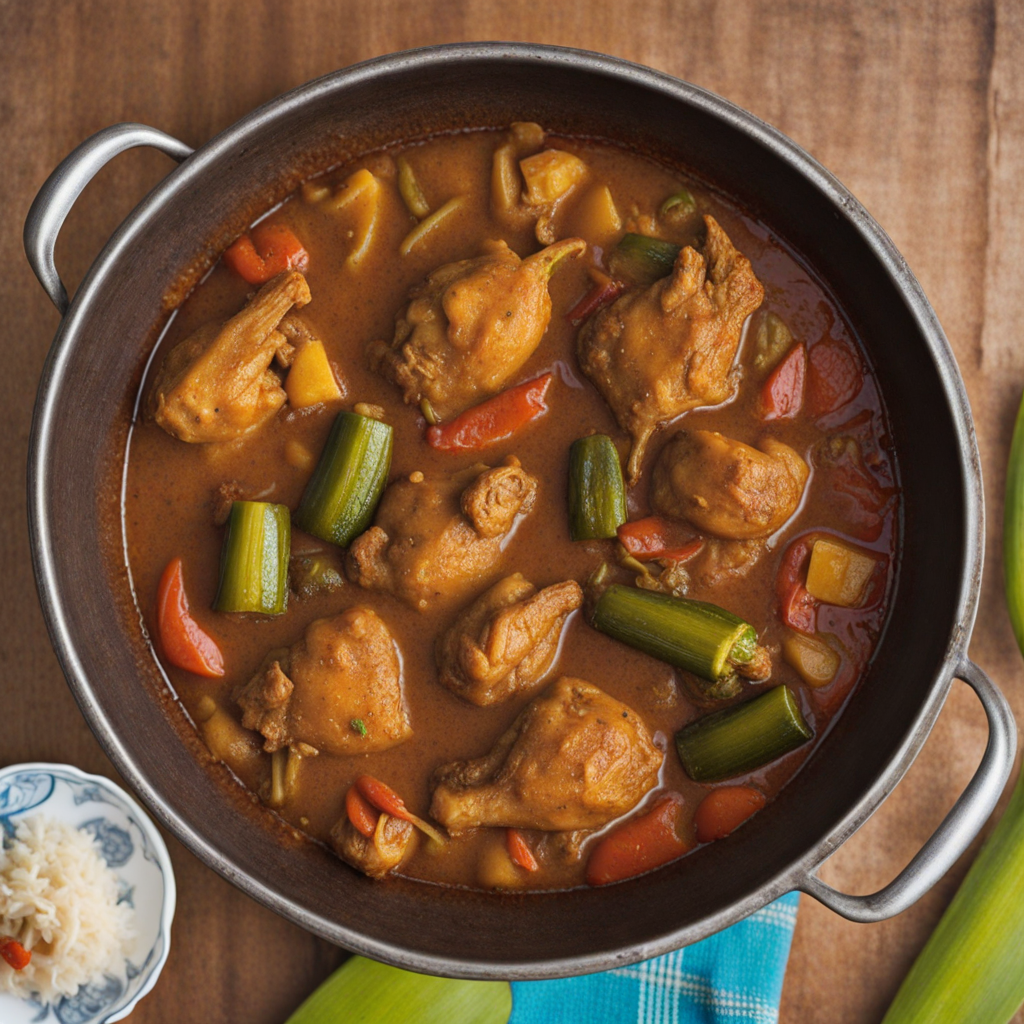Moamba de Amendoim
Moamba de Amendoim is a delightful Angolan dish that showcases the rich culinary heritage of the country. At its core, this dish features a savory peanut sauce that envelops tender pieces of chicken or fish, creating a harmonious blend of flavors that is both comforting and satisfying. The sauce is made from ground peanuts, which are roasted and then blended to create a creamy, nutty base that is thickened with palm oil and seasoned with a variety of spices, including garlic, ginger, and chili. This combination results in a dish that is both aromatic and deeply flavorful, making it a must-try for anyone looking to explore Angolan cuisine. Accompanying the Moamba de Amendoim are typically sides that enhance the overall dining experience. Cooked cassava or rice often serves as the perfect vehicle for soaking up the rich peanut sauce, while vegetables such as okra or spinach provide a fresh and vibrant contrast to the dish's richness. The combination of textures—from the crunch of the roasted peanuts to the succulence of the meat—creates a satisfying mouthfeel that keeps diners coming back for more. This dish is not just a meal; it is a celebration of Angolan culture and family gatherings. Often prepared for special occasions, Moamba de Amendoim embodies the warmth and hospitality of the Angolan people. As you savor each bite, you're not just tasting the food; you're experiencing the love, tradition, and history that have been passed down through generations. This makes Moamba de Amendoim a dish worth discovering for anyone eager to explore new culinary horizons.
How It Became This Dish
Moamba de Amendoim: A Culinary Journey Through Angolan History Introduction Moamba de Amendoim is not just a dish; it is an emblem of Angolan culture, tradition, and history. This rich and flavorful peanut stew embodies the essence of Angolan cuisine, reflecting the diverse influences and ingredients that have shaped the country over centuries. To understand Moamba de Amendoim, we must delve into its origins, cultural significance, and the evolution of this beloved dish through time. Origins The roots of Moamba de Amendoim can be traced back to the 16th century when the Portuguese colonizers arrived in Angola. The country, located on the southwest coast of Africa, has a long history of trade and cultural exchange, which significantly influenced its culinary landscape. The introduction of peanuts, or “amendoim” as they are known in Portuguese, is one such example. Originally native to South America, peanuts were brought to Africa by the Portuguese during their trade expeditions. The dish itself is a harmonious blend of indigenous Angolan ingredients and Portuguese cooking techniques. The base of Moamba de Amendoim typically consists of chicken or fish, combined with a rich sauce made from ground peanuts, palm oil, garlic, onions, and spices. This combination not only showcases the bountiful resources of Angola but also reflects the adaptability of its people, who have incorporated different elements into their culinary practices. Cultural Significance Moamba de Amendoim is more than just sustenance; it carries profound cultural significance. In Angola, food is a cornerstone of social life, and meals are often communal events that bring families and friends together. Moamba de Amendoim is frequently served during celebrations, religious ceremonies, and family gatherings, symbolizing unity and togetherness. Sharing a pot of this savory stew is an act of love and hospitality, embodying the spirit of Angolan culture. The dish also reflects the agricultural practices of the region. Peanuts are a staple crop in Angola, and their cultivation has been passed down through generations. The reliance on local ingredients not only sustains the community but also fosters a connection to the land and its history. For many Angolans, preparing and enjoying Moamba de Amendoim is a way to honor their ancestors and preserve their culinary heritage. Development Over Time As Angola has evolved, so too has Moamba de Amendoim. The country gained independence from Portuguese rule in 1975, a monumental event that sparked a resurgence of national pride and a renewed interest in traditional foods. In the years that followed, Angolans began to rediscover and embrace their culinary heritage, with Moamba de Amendoim at the forefront of this movement. During the post-colonial era, the dish saw variations as families adapted recipes based on regional availability and personal tastes. Coastal communities might incorporate seafood, while inland families may prefer chicken or goat. The use of palm oil, a staple in Angolan cooking, has remained consistent, but variations in spices and additional ingredients, such as sweet potatoes or vegetables, have emerged, reflecting the diverse culinary landscape of the country. The civil war that plagued Angola from 1975 to 2002 had a profound impact on the nation’s food culture. Food scarcity and displacement forced many Angolans to adapt their cooking practices, often relying on what was available. Despite these challenges, Moamba de Amendoim remained a beloved dish that provided comfort and familiarity during tumultuous times. It became a symbol of resilience, serving as a reminder of home and heritage for many Angolans living in exile or facing hardship. In contemporary Angola, Moamba de Amendoim has gained international recognition, thanks in part to the global interest in African cuisines. The dish has been featured in culinary festivals and restaurants around the world, allowing a broader audience to appreciate its rich flavors and cultural significance. Chefs and home cooks alike have embraced the dish, experimenting with different variations while honoring its traditional roots. Modern Interpretations and Global Influence Today, Moamba de Amendoim continues to evolve as Angolan chefs experiment with modern cooking techniques and fusion flavors. Influences from global culinary trends can be seen in some contemporary interpretations of the dish, which may incorporate ingredients like coconut milk or spices from other parts of Africa and beyond. These adaptations are a testament to the dish’s versatility and the dynamic nature of culinary traditions. At the same time, there is a concerted effort to preserve the authenticity of Moamba de Amendoim. Many Angolan families pass down their recipes through generations, ensuring that the traditional methods and flavors are maintained. Cookbooks, culinary workshops, and food festivals celebrate the dish and its history, fostering a sense of pride among Angolans and promoting cultural awareness. Conclusion Moamba de Amendoim stands as a testament to the rich tapestry of Angolan history and culture. From its origins rooted in the fusion of indigenous and Portuguese culinary practices to its modern interpretations, the dish has adapted and thrived through the ages. More than just a meal, it is a celebration of community, resilience, and identity. As Angola continues to embrace its culinary heritage, Moamba de Amendoim will undoubtedly remain a cherished staple, a symbol of national pride, and a delicious reminder of the country’s storied past. Whether enjoyed in a bustling market, at a family gathering, or in a fine dining restaurant, this beloved peanut stew continues to captivate the hearts and palates of those who experience it, bridging generations and cultures through its rich flavors and history.
You may like
Discover local flavors from Angola







